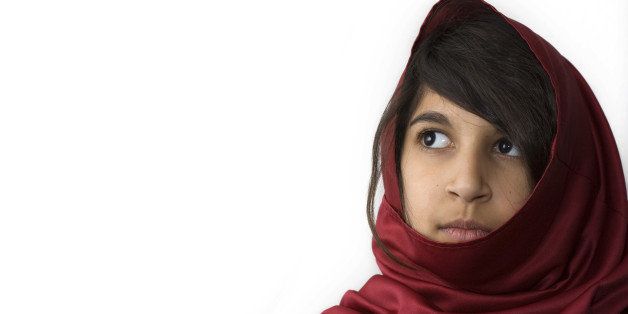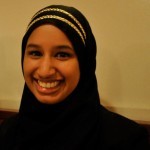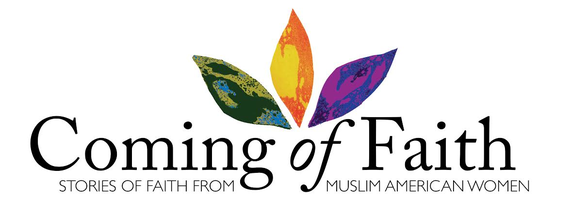
Coming of Faith brings the voices of Muslim American women to the world through multidimensional storytelling and empowerment initiatives. This post was originally published on Coming of Faith.
I was at Walgreens in the cosmetics section, looking at L'Oreal's cream foundations. I carefully looked at the ad of Beyonce above the foundations. That was the difficult thing with drugstore foundations. I never knew which color would be right for me and had to undertake a bit of guesswork. Hmmm...on the ad, it featured which shade Beyonce was wearing. Perhaps they listed which color she was just for reference for confused girls like me.
"Well," I thought to myself, "If Beyonce is Black and she's that shade listed in the ad, I must be at least a shade lighter because I'm brown." My logic made sense to me at the time.
Later, when I went home and tried on the foundation, it was too light. I didn't realize that even though Beyonce was black, her light skin, was probably the same color as mine or perhaps even lighter. Little did I know that Beyonce had become increasingly light-skinned, blond and straight-haired in the media to become more palatable to mainstream white America, and that I, in an attempt to feel like I fit in, also wanted to be more palatable as well. I used to look at Beyonce, a Black woman with blond hair, and think, "Man, if she can be blond and she's black, why can't I pull it off?" Looking back, it made no sense to be blond, since as a hijabi, most people wouldn't know anyways. But I still thought that being blond even underneath my hijab would be cool. Though my brown eyes and dark skin were not the norm, I grew to resent my "boring" brown eyes and dark skin that set me apart from everyone else. I despised being different. Like any other high schooler, I just wanted to fit in.
I didn't realize at the time that my secret desire to be blond was in fact part of a deeper confused identity as to where I fit in as a brown hijabi girl in a predominantly white city. Growing up in Pleasanton, California, as a brown hijabi was sometimes alienating. It was a city that, while I was growing up, was pre-dominantly white, and not just white, but preppy, surfer-chick, blue-eyed, blond-haired Abercrombie and Fitch and Hollister-wearing white. In high school, I would see the white girls who woke up at 6 a.m. everyday to straighten their perfectly blond hair, either natural or dyed, wear a full face of foundation, eye makeup and pink lip gloss and carefully coordinate their cute preppy outfits.
I watched as these girls, even in class, were pre-occupied with their looks, pushing their boobs up, rolling their shorts up and trying to get away with whatever they could to make themselves more sexually appealing. Where did I, as a brown hijabi girl fit in?
With my brown skin, dark brown eyes and hair (which was, of course, covered), I already did not look like the typical girl in my school. On top of that, trying to adhere to Islamic principles of modesty, in the form of both modest dress and modest behavior, seemed completely against the mainstream culture which told young women that our value was based on looking sexy all the time and attracting the attention of the opposite gender.
I was conflicted. While I knew what was right, and it was my choice to dress and act the way that I did, inside, I still wanted to be the typical white girl in my school. I still secretly hoped some guy would ask me to prom in a romantic way. I would go with friends to the mall and try on pretty prom dresses and shorts and tank tops in dressing rooms, in some way fulfilling this secret desire.
But at the end, I knew that that wasn't who I should be. I knew that I would never be a white, blue-eyed blond girl and that I didn't think it was right for me to dress and behave the way most girls around me did. And I resigned myself to modesty, hoping that one day, inshaAllah, it would be worth it all.
It's funny looking back, since I am completely different now. Since then, my views of myself have changed tremendously and I've grown a lot. I no longer feel a need to be white or try to fit in with everyone else. Now, I feel comfortable in my brown skin and hijab and love how I look, even if it's different from the mainstream. There are still some times when it is hard being a hijabi because of the way many people perceive me, but I feel much more comfortable dressing the way I do now and being who I am.
Maliha Fatima Rahman is a graduate student at Drexel University's campus  in Sacramento, California and is currently applying to medical school. After graduating from Wellesley College in Massachusetts, she returned to her home state of California to start her masters program. She is passionate about global health, women's issues, international relations, and fat cats. She didn't believe in soulmates until she met her recently adopted cat, Lana, whom she believes is herself in cat form. Follow her on twitter.
in Sacramento, California and is currently applying to medical school. After graduating from Wellesley College in Massachusetts, she returned to her home state of California to start her masters program. She is passionate about global health, women's issues, international relations, and fat cats. She didn't believe in soulmates until she met her recently adopted cat, Lana, whom she believes is herself in cat form. Follow her on twitter.
